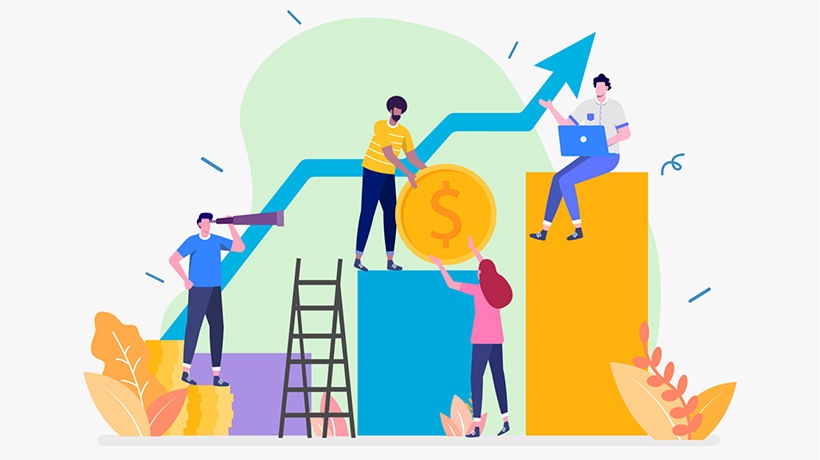Business Results Depend On Learning
“The only way to win is to learn faster than anyone else.” — Eric Ries, The Lean Startup
In today’s fast-paced global marketplace, the businesses that succeed are those that learn, adjust, and respond first. McKinsey found that over 80% of executives see reskilling as critical to business success in the next 5 years [1]. The problem is that too many learning programs are poorly designed to meet the demands of a changing world. Only 12% of employees report that they use the skills learned in L&D programs in their jobs; 3 out of 4 do not believe that learning had measurably improved business performance [2].
This is a serious issue. Common sense dictates that people will engage more effectively and enthusiastically with learning when they can see that the content will be directly beneficial to them, either by making their day-to-day work life easier or by supporting their career goals. Clearly then, the solution is to tie learning into Performance Management. If learning translates into career progression, then the employee should be motivated to learn. As higher employee performance relates to business success, so learning delivers a clear Return On Investment.
However, linking learning to Performance Management can be tricky. For example, the temptation might be to incorporate learning achievements into organizational goals, using a technique like the Objective and Key Results (OKR) approach to goal setting. It’s true that OKRs can be ideal for setting individual goals but only when those goals relate to the broader objectives of the company or team. Individual OKRs can create a valuable sense of shared objectives, communicate clearly to each individual how they contribute to the whole, and provide a helpful sense of transparency.
However, they aren’t a great fit for personal learning development goals. Learning is a long, on-going process. OKRs, by contrast, are updated quarterly. It’s important that employees don’t feel like learning is something that they can “finish” and check off a list. Setting OKR-style learning goals could simply motivate employees to complete more learning content, transforming learning into a box-ticking exercise. Companies don’t need people to “do more learning,” they need them to use their learning to improve their performance.
So, How Can You Tie Learning To Performance?
We’d still recommend that you develop OKRs at an organizational, team, and individual level. For individual OKRs, the best practice is usually to allow individuals to set their own targets. (Here’s an article if you need a few pointers.) But, to manage employee Learning and Development, a competency framework can be a more helpful starting point.
As a quick refresher, competencies are the combined knowledge, skills, attributes, and behaviors that you have identified as necessary for each role in your company [3]. A competency framework maps all of these competencies out across each role to reflect different levels of performance.
Competency frameworks are an incredibly effective way to define performance goals at an individual level because:
- They are values-based
Essentially, competencies are the behaviors that you want to see in your business. The competencies that you choose to develop and encourage should be those that express your overall company values. Therefore, learning tied to a competency framework not only boosts performance but also strengthens your company culture. - They are long-term
A well-developed competency framework should include multiple levels of achievement, showing your employees exactly what individual progress should look like in each role. So, when you build learning programs that develop competencies, you promote a long-term view of learning and overall performance in the role. This promotes employee retention and ties learning into long-term business success. - They drive business performance
The competencies you select should be those that deliver the greatest business impact. By clearly articulating the behaviors that generate business success, you can communicate with your employees and managers the way that their performance ties into the top-level business objectives. Competency frameworks give you a common vocabulary to describe the purpose and outcomes of learning in a business context.
Communicating the competency framework effectively to employees is critical. The framework should be embedded in everything from your job description to your identified knowledge, skills, and behaviors (KSBs), to your performance reviews. Handling performance measurement within a competency framework requires a 360° approach. It’s usually best to invite employees to score themselves on each competency, and then invite validation from their peers and line managers.
Once you’ve developed a competency framework and used it to score each employee, you can clearly identify how to support those competencies with learning. If your learning program focuses on developing competencies, then this in turn will directly benefit individual performance and increase the employee’s capacity to contribute to your company and team-level OKRs.
Build Individual Pathways
While a competency framework can be an invaluable support to setting learning goals, it is important to remember that development is highly personal. Many personal development goals will fall outside of the competency framework, no matter how detailed it is. The framework should function as a starting point. Your Learning and Development team should make sure baseline pathways are mapped to cover the core role KSBs within the competency framework. The learner should then self-serve on other areas of development that are more specific to their own progress, or of particular personal interest.
The process of setting Learning and Development goals needs to be an ongoing, iterative collaboration between the employee and the line manager. For best results, you’ll need to use a learning platform that allows you to customize the general learning pathways developed by L&D, transforming them into individual, personalized learning journeys for each employee.
Key Takeaways
- Current learning programs frequently fail to deliver performance improvements. The solution is to tie Learning and Development directly into Performance Management.
- OKRs are a good way to manage performance but may not be the right fit for tracking individual learning goals. A competency framework can be a more helpful structure for tying learning to performance.
- L&D is responsible for defining general competency-based learning pathways for each role; the individual learner is responsible for identifying individual learning goals to build a customized learning journey.
- Using a competency framework, coupled with personalized learning pathways, can help you to clearly communicate the direct link between employee Learning and Development and performance.
- This process ensures your employees still have a clear grasp of the direct relationship between their learning, their performance, their career progress, and the business results.
- As a result, people are more invested in their learning, more motivated to apply learning in the workplace, and more likely to deliver a stellar performance.
References:
[1] Where Companies Go Wrong with Learning and Development
[2] Why individual OKRs don’t work for us
[3] Developing a Competency Framework









